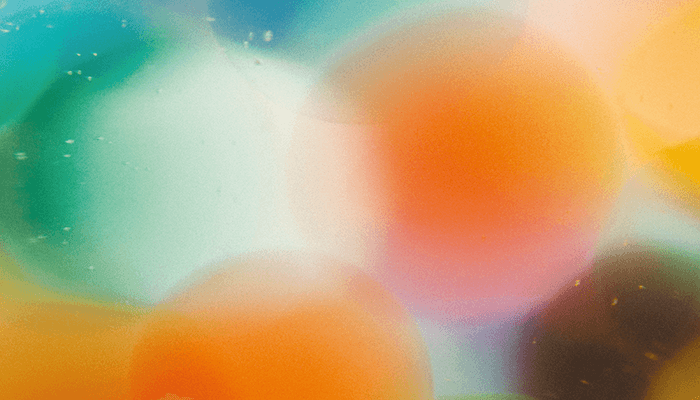
Wound healing is an important process, yet excessive wound healing and subsequent scarring is a major pathological factor in many diseases. Following ophthalmic surgery, scar tissue within the eye can cause many problems; for example, proliferative vitreoretinopathy (PVR) occurs in more than 75 percent of failed retinal detachment surgeries (1). PVR causes the retinal pigment epithelium (RPE) layer of cells to undergo epithelial to mesenchymal transition (EMT), hyper-proliferation, and abnormal migration to form intra-ocular scarring membranes. These fibrous-cellular membranes contract and cause the retina to detach yet again.
Current treatment options are limited to surgical removal of these scar membranes, with poor success rates. We have been investigating ways in which biomaterials can prevent this scarring. In particular, we are using hydrogels made of synthetic polymers. Hydrogels are heavily liquid saturated and solid gels that form from crosslinking polymers. They have tunable and versatile physical and chemical properties, so are ideal materials for biomedical applications. In our research, we demonstrated that a bio-functional thermogelling polymer alone is able to prevent retinal scarring in a pre-clinical rabbit model of PVR (2). In our lab disease model, we observed that this anti-scarring effect was primarily mediated via RPE cell internalization of the polymer, which led to impairment of EMT, suppression of hyper-proliferation, and migration. Genome-wide transcriptomic profiling revealed that this polymeric internalization upregulates the nuclear factor erythroid 2-related factor 2 (NRF2) signaling pathway – a master regulator of antioxidant response homeostasis, as the key sensor and effector, whose activation was sufficient to prevent scarring. This study highlights the potential of using synthetic polymer alone to modulate cellular behavior and offers a potentially novel therapy for retinal scarring.
The science
Treatment of PVR is an unmet clinical need; the current surgical option is far from ideal. Our bio-functional polymer serves the dual function of a vitreous substitute for retinal detachment surgery, yet also elicits specific anti-scarring effects. It was surprising to us that this synthetic polymer alone (without additional therapeutics or modifications) is able to elicit specific biological responses to prevent PVR, challenging the belief that polymeric materials function merely as inert drug carriers and that a small molecule entity is required to achieve a therapeutic effect. Lastly, this unique bio-functionality of the polymer may be applicable beyond ophthalmology, where any anti-scarring outcome is desired.
Our hydrogel has a reversible physical behavior, where the manipulation of temperature can be used to tweak its physical state. In total, it has three states that depend on the number of individual polymers forming bonds with each other, which are, in sequential order of low to high polymeric bonds: single polymer, polymeric micelles, and hydrogel. When injected it easily flows at its low bonded state, but in the relative heat of the eye the polymer is in hydrogel form. In this hydrogel form, it undergoes slow erosion that releases polymeric sub-micron range micelles, which interact with the aberrant retinal cells to initiate a cascade of cellular reactions. The most important of these reactions being the aforementioned upregulation of the master regulator, NRF2.
 Credit: Image sourced Unsplash.com
Credit: Image sourced Unsplash.com
A better alternative
PVR has defied the preventative efforts of many researchers. Current agents used during vitreoretinal surgery include expansile gasses and silicone oil, which have been used since the 1960s. These have many inherent limitations, such as requirement for prolonged postoperative position, raised intraocular pressure, and risk of cataract formation; they have not been replaced because of the lack of better alternatives. Moreover, these agents don’t offer additional benefits of helping prevent PVR.
We consider our polymer with its intrinsic anti-scarring properties as a potential “replacement” in vitreoretinal surgeries. From a surgical perspective, the polymer’s spontaneously gelates upon contact with the eye (from a liquid state), retains viscosity despite injection via small bore needles, retains optical clarity to ensure good immediate postoperative vision, eliminates the need for postoperative heat posturing, is biocompatible and biodegradable, thus eliminating need for surgical removal, and enables a long-term sustained release of the bio-functional polymers to elicit a sustained biological effect.
The polymer used in the lab is currently being developed by Vitreogel Innovations Inc, a spin-off from the Translational Retinal Research Laboratory (TRRL), which is dedicated to developing polymer-based therapeutics for ophthalmology indications. Vitreogel Innovations Inc is an ISO 13485 (Medical Device Quality Systems) accredited company and is currently establishing a manufacturing process for large-scale polymer production under current good manufacturing practice (cGMP) guidelines. Our work serves as a proof of concept for the application of polymers to address PVR and will expand the pipeline of therapeutics being developed by the company.
Research ahead
Although the bio-functional polymer prevented retinal scarring in a large-eyed rabbit preclinical model, the safety and efficacy of this polymer in PVR prevention will have to be tested in more clinically relevant non-human primate disease models prior to translation to the clinic as they have the closes ocular structure to human through its effective endotamponade and intrinsic anti-scarring properties.
We will also continue to work on biomaterials to produce the next generation of bio-functional gels. Future studies will be focused on targeted modifications to the polymer to understand how changes in chemical structure affects biological activity. We plan to extensively characterize possible compositional variations and perform structure to function correlation studies.
We also wish to identify alternative applications beyond ophthalmology. The polymer’s ability to modulate the various cellular processes simultaneously – EMT, migration, and proliferation – provides potential expansion of its use beyond the eye. Notably, these cellular processes are key in the development of various cancers. Furthermore, the role of Nrf2 has been explored thoroughly in tissue scarring for dermatological applications, so the polymer could also be developed as a treatment for hypertrophic scars or keloid development. Beyond ophthalmology, the unique bio-functionality of the polymer could also be applied to other diseases, such as orthopedics, where intra-articular joint scarring may be a problem.
References
- JC Pastor et al., “Proliferative vitreoretinopathy: risk factors and pathobiology,” 21, 127 (2002). PMID: 11906814.
- BH Parikh et al., “A bio-functional polymer that prevents retinal scarring through modulation of NRF2 signalling pathway,” Nat Commun, 13, 2796 (2022). PMID: 35589753.
- Z Liu et al., “Retinal-detachment repair and vitreous-like-body reformation via a thermogelling polymer endotamponade,” 3, 598 (2019). PMID: 30962587.
